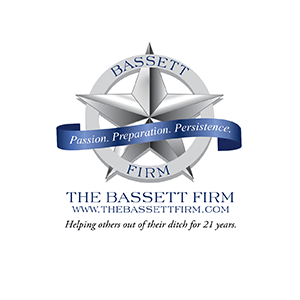
The Case
Lout v. Methodist Hosp., 2015 Tex. App. LEXIS 6272 (Tex. App. – Houston [14th Dist.] June 23, 2015).
Background
The Plaintiff Omega Lout sued The Methodist Hospital (“Hospital”) when she slipped on water that had accumulated on the floor of the Hospital’s heart failure unit. In her petition, she alleged that the Hospital was negligent in failing to inspect the premises in question and in failing to warn its invitees.
The Hospital moved to dismiss Lout’s suit, asserting that the claim was a health-care-liability claim (HCLC) and that Lout had failed to timely file an expert report as required in such cases. The trial court granted the Hospital’s Motion to Dismiss.
The Fourteenth Court’s Analysis
As the Court of Appeals observed, Chapter 74 of the Texas Civil Practice and Remedies Code governs HCLCs, which defining such claims as:
a cause of action against a health care provider or physician for treatment, lack of treatment, or other claimed departure from accepted standards of medical care, or health care, or safety or professional or administrative services directly related to health care, which proximately results in injury to or death of a claimant, whether the claimant’s claim or cause of action sounds in tort or contract.
Tex. Civ. Prac. & Red. Code Ann. § 74.001(a)(13). If a court determines that a claim is a departure from the accepted standards for providing health care and thus a HCLC, the Plaintiff must serve the Defendant with an expert report in a timely fashion. That report must (1) on or before the 120th day after the Defendant files his answer and (2) provide a summary of the expert’s opinions relating to “applicable standards of care, the manner in which the care rendered by the physician or health care provider failed to meet the standards, and the causal relationship between that failure and the injury, harm, or damages claimed.” Id. § 74.351(a), (r)(6).
As the Supreme Court has held, the claim need not be directly related to the provision of health care, but it must be “substantively related to the defendant’s providing of medical or health care.” Ross v. St. Luke’s Episcopal Hosp., 2015 Tex. LEXIS 361, at *19 (Tex. May 1, 2015). The Supreme Court also noted that the following considerations are relevant:
1. Did the alleged negligence of the defendant occur in the course of the defendant’s performing tasks with the purpose of protecting patients from harm;
2. Did the injuries occur in a place where patients might be during the time they were receiving care, so that the obligation of the provider to protect persons who require special, medical care was implicated;
3. At the time of the injury was the claimant in the process of seeking or receiving health care;
4. At the time of the injury was the claimant providing or assisting in providing health care;
5. Is the alleged negligence based on safety standards arising from professional duties owed by the health care provider;
6. If an instrumentality was involved in the defendant’s alleged negligence, was it a type used in providing health care; or
7. Did the alleged negligence occur in the course of the defendant’s taking action or failing to take action necessary to comply with safety-related requirements set for health care providers by governmental or accrediting agencies?
The Court pointed out that not every slip-and-fall that happens in a hospital should be considered an HCLC because doing so might “afford defendant health care providers a special procedural advantage in the guise of requiring plaintiffs to file expert reports in their suits regardless of whether their cause of action implicated the provision of medical or health care.”
The Fourteenth Court’s Holding
The Court of Appeals reversed the trial court’s judgment, holding that the Motion to Dismiss should have been denied. As the Court stressed, the Defendant’s Motion had to be denied because the Defendant simply failed to provide enough evidence to show that Lout’s claim was in fact substantively related to the Hospital’s provision of health care. The Court clarified that the Hospital could not assert that the claim was a HCLC just because it occurred within a hospital.
The Hospital supported its Motion with discovery responses that showed Lout had visited her mother who was a patient numerous times, and had been to the heart failure unit a few times additionally. But no other evidence was offered at the hearing; no witnesses were called or exhibits admitted. As the Court concluded, “[O]n this record, we do not know if the incident occurred in the unit’s lobby, a visitor’s restroom, a vending area, a patient’s room, an examination room, etc.” Further, the Hospital neglected to discuss any of the safety-related requirements that governmental agencies place upon medical providers.
The Bottom Line
When the Plaintiff’s claim is arguably a HCLC, defense counsel should file a Motion to Dismiss, making sure to include firm evidence that demonstrates the Plaintiff was injured while the provider was in the act of providing health care. If defense counsel succeeds on the Motion, the Plaintiff must pay “reasonable attorney’s fees and costs of court.” See § 74.351(b).
Because the Court will construe all inferences in the Plaintiff’s favor for the purposes of the Motion, defense counsel should support their Motion with strong evidence from discovery responses, admissions, and affidavits. And, in cases like Lout-when Plaintiff’s counsel has forgotten to file the requisite expert report-defense attorneys should have an easy win.
Further, there is no real procedural advantage for a Plaintiff to choose to pursue her claim as a HCLC rather than an ordinary negligence claim: the elements and available damages are identical. Rather, the Legislature added the expert report requirement to limit the number of frivolous suits against health care providers. See Ross at *12.
Finally, many of recent Texas decisions have suggested that a broad range of claims are, in fact, HCLCs, and that defense counsel may need only to muster up one strong “Yes” to any of the seven questions mentioned above. Defense counsel could focus their arguments on the fact that the Plaintiff was not in a common area or that the applicable standards of care set by governmental and accrediting agencies are essential to judging the provider’s negligence. Defense counsel should not forget to show why a case should be seen as a HCLC and not a typical slip-and-fall.

